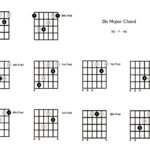Rhythm guitar is the backbone of countless songs across genres, providing harmonic support and driving the groove. Capturing its essence in a recording is crucial, but the “right” way to do it isn’t always straightforward. As mentioned in the original forum discussion, choosing the correct microphones is just the first step in engineering a great rhythm guitar sound. Beyond that, the blend of microphones, along with other studio tools, plays a vital role in shaping the final tone.
There’s a vast palette of “correct” rhythm guitar sounds available to producers and engineers. The challenge isn’t finding the right sound, but rather defining what sound is appropriate for the specific song and musical context. The initial forum post rightly points out that the question of “how to record rhythm guitar” is broad and requires more definition.
For a bluegrass or country blues ensemble featuring a traditional flat-top acoustic guitar, the recording approach might resemble the techniques previously discussed. However, the emphasis on a microphone placed at the back of the guitar could be reduced, depending on the desired sound and the role of the guitar in the mix. In a solo or duet setting, employing multiple microphones – perhaps even three – could be beneficial to capture a richer and more detailed sound. The decision hinges on how prominent the guitar is in carrying the overall sound of the band. Is it a supporting instrument, or is it driving the musical narrative?
When recording acoustic rhythm guitar for an electro-acoustic track, a different strategy may be more effective. In this scenario, a single, “crisp” sounding microphone positioned over the picking hand and soundhole – angled slightly towards the lower bout of the guitar – could be ideal. This placement aims to capture the articulation of the picking hand and the resonance of the guitar body, while potentially minimizing unwanted low-end boominess that can sometimes occur when micing directly at the soundhole. This signal could then be further shaped with EQ and subtle compression, depending on the specific needs of the track and the player’s style.
In a densely arranged song with numerous layers of instruments, where the acoustic rhythm guitar needs to maintain its presence, stronger compression and EQ adjustments may be necessary. These tools can help carve out sonic space for the guitar, allowing it to cut through the mix and remain audible amidst other instruments. Conversely, if the rhythm guitar takes center stage at any point in the song, it’s often beneficial to reduce the amount of compression and EQ during those sections, allowing for a more natural and dynamic sound that breathes in the mix. Each song presents unique sonic challenges and opportunities, demanding tailored recording and mixing decisions.
The player’s picking style and attack are also significant factors in microphone placement and subsequent tonal modifications. A heavier attack might necessitate slightly different mic positions or EQ choices compared to a lighter, more delicate playing style.
The “shimmery” sound often mentioned is indeed well-suited for backing rhythm guitar tracks, providing a pleasant texture without overpowering other elements. For electric rhythm guitar, completely different recording techniques come into play, often involving amplifiers, cabinets, and various effects. However, the focus here has been primarily on acoustic instruments, as indicated by the original forum thread.
Ultimately, effectively recording rhythm guitar involves understanding the instrument’s role in the song, experimenting with microphone placement and techniques, and thoughtfully applying processing to achieve the desired sonic outcome. There’s no single “magic bullet,” but rather a series of informed choices that lead to a compelling and appropriate rhythm guitar track.

